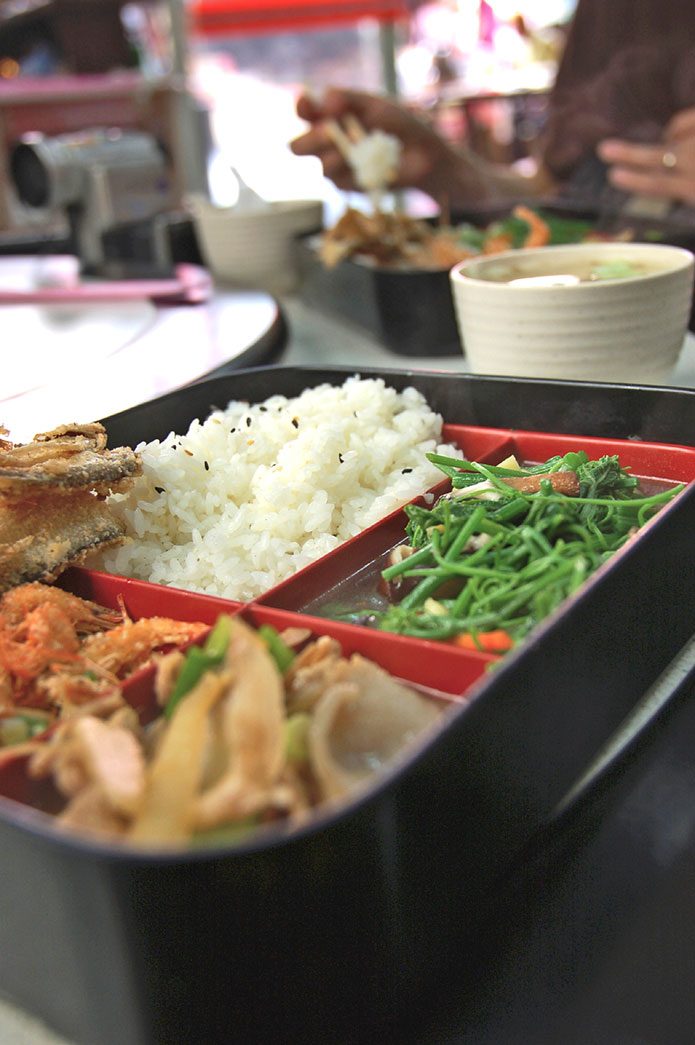
The lunchtime behaviour of Japan’s office workers has come to be treated as a useful socioeconomic indicator.
An article in Nikkei Marketing Journal (11 May) examines changing trends in terms of lunch procurement, time spent eating and other practices.
According to a 2014 survey of staff at Shinsei Bank, Limited, 16.1% ate their lunch at a restaurant, but this figure declined to 13.9% in 2015. Fewer workers also ate in the bank’s dining hall (13.8% in 2014 compared with 12.6% in 2015).
One factor is more bank staff bringing lunch from home. Compared with 38.1% selecting this option in 2014, the percentage had risen to 44.1% in 2015. Staff who bought boxed meals outside the office and took them back to eat at their desks declined slightly, from 22.7% to 21% over the period.
A high percentage of working women—66.7% according to a survey by Nikkei Woman conducted last December—is motivated by their diet and health. This interest has been supported by the popularity of posts of homemade lunch photos on Instagram and other social networking sites.
Businesses, however, appear determined to win back customers. Some 7-Eleven convenience stores have begun taking next-day orders for sandwiches and boxed lunches, indicating a move to offer a catering-style business. A source at the firm said that, by the end of August, this system would be in operation in most parts of Japan.
Meanwhile, FamilyMart convenience stores are said to be expanding sales of their meals via vending machines installed in office buildings. Some 1,700 such machines are currently in operation.
Another item of interest is the increasingly brief time that male staff take to wolf down their meals. The time spent has declined from around 34 minutes in 1983 to around 22 minutes in 2015.